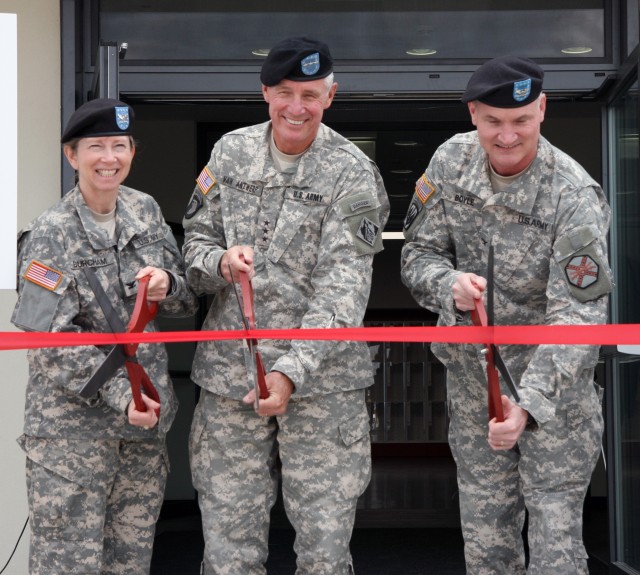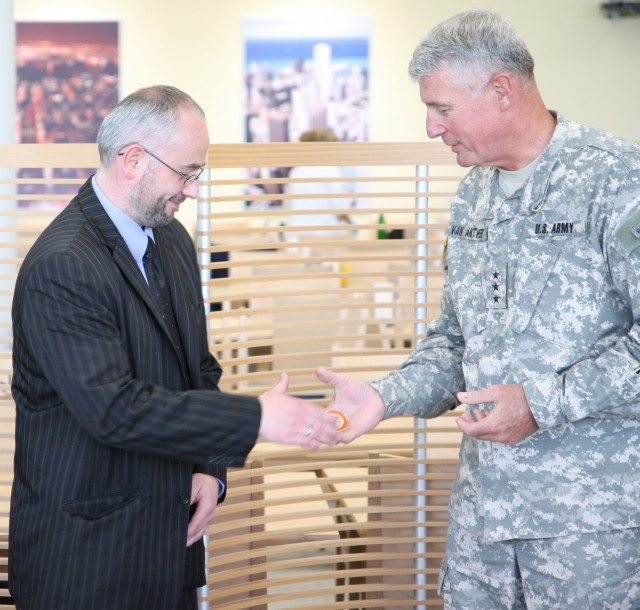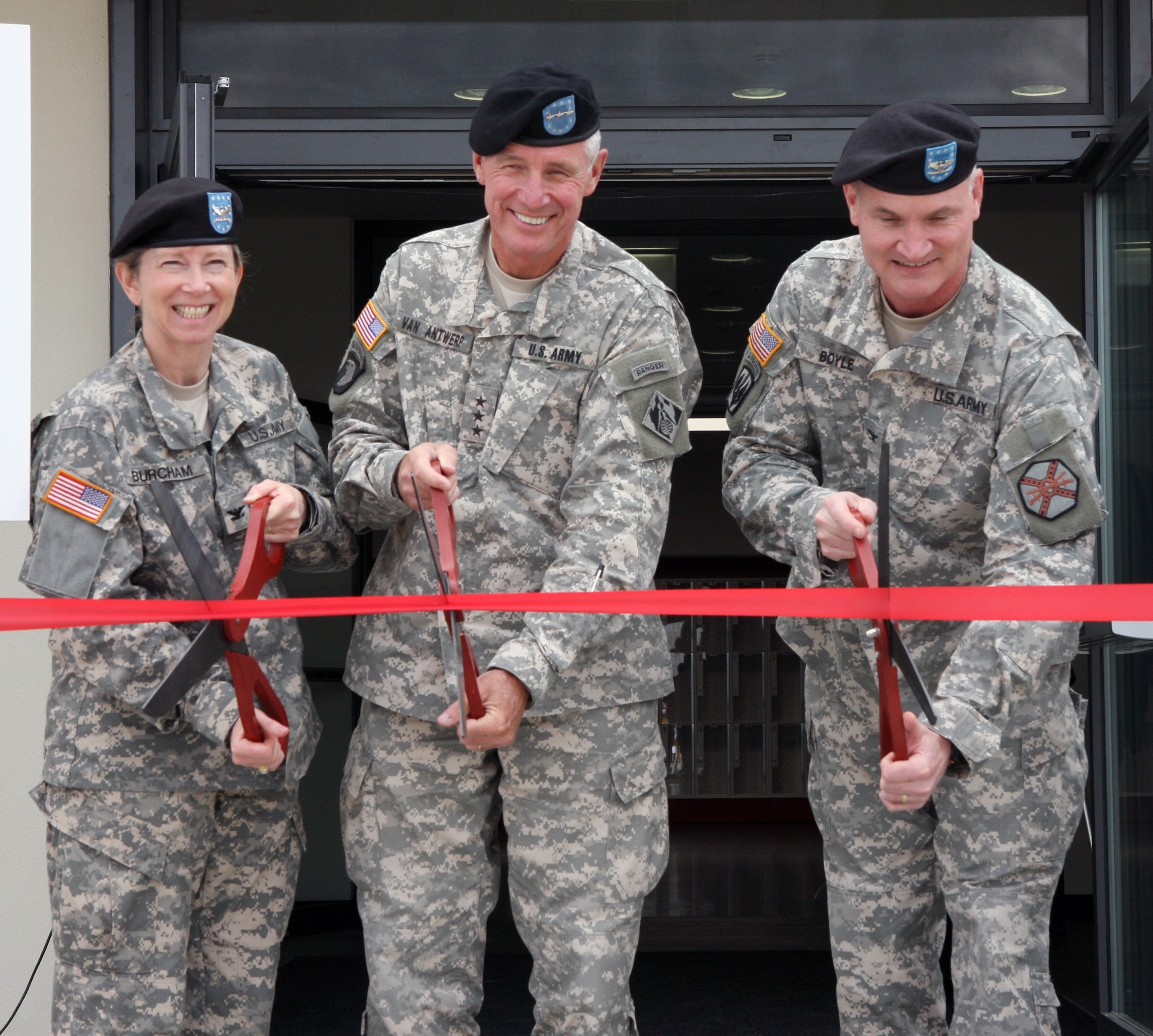It's no secret that Bavaria has been called the Texas of Germany. It's down south, the locals occasionally play dress up, and people talk with what the rest of the country would deem a funny accent.
Most importantly, things are bigger in Bavaria. Not only beer, pretzels, and mountains; but also construction projects.
One of the largest ongoing construction efforts in the German state has been at the U.S. Army Garrison Grafenwoehr - not surprisingly the largest U.S. training area in Europe - where the U.S. Army Corps of Engineers has managed roughly $100 million in construction every year since 2003.
The largest project here is Grafenwoehr's unique gated community called Netzaberg, which will provide 835 build-to-lease family housing units with an integrated town center, including an elementary and middle school, chapel, child development center, youth services center, shoppette, and sports fields.
"It's huge," said Peter Barth, the District's regional program manager at Grafenwoehr. "The town center in particular was a significant coordination effort because we have so many contractors, U.S. organizations, and host nation entities working very closely on schedules and on the same property."
The Corps' chunk of the effort at Netzaberg - totaling almost $87 million - was primarily to manage the construction of the town center and set up the infrastructure for the entire neighborhood.
The largest share of this has gone toward constructing the elementary and middle schools, which cost about $30 million combined.
"Once completed, the town center is really the heart of the community," said Barth. "I'm very excited about that, especially to see how the various puzzle pieces fit together. Six years ago we only had a concept: To create a little town next to a training area. And from paper to finished product - it's really amazing."
Completed recently at the Netzaberg town center were the $7.7 million child development center and the $5.4 million youth services center - two facilities that U.S. Army Corps of Engineers' chief, Lt. Gen. Robert Van Antwerp, dubbed "awesome," because they were the first completed service facilities in the integrated town center.
Nearing completion at Netzaberg are the $3.7 million access control point and anti-terror force protection gate - anticipated to be turned over in August - and the elementary and middle schools, which are scheduled to open for the fall 2008 school year.
The new schools are a boon to residents of the Netzaberg community - many of whom have been living there for about a year - who previously bussed their children to Vilseck Elementary School because there was no space at Grafenwoehr.
"I'm pretty excited," said Marie Vigue, an employee of the child development center whose daughter will be attending Netzaberg Elementary School when it opens in August. "I can't wait to go in and see it and get the orientation."
Still on slate for the community is the chapel. Its design combines the modern architecture of the town center with traditional elements of a chapel, say officials. This project, originally billed to be completed in 2010, is expected to be turned over in 2012.
In total, the Netzaberg community is so financially large and universally recognized, that even former Installation Management Command - Europe Region director Russell Hall was quoted as saying his greatest success in the six years he was at the helm of the command was the construction of Netzaberg.
Barth agreed that the community's emergence has been a true success, saying he's been most amazed by the coordination of all the parties involved to keep construction on schedule and within budget.
"It's a huge and gigantic program. But it is also standardized," said Barth. "We have the standards, we have processes and communications, and we have the teams in place. But we also have a program culture. There is a mutual understanding for others' problems and the goals, needs, and expectations are communicated throughout. It's really a kind of respectful culture and motivation that can't be easily copied and pasted."
The Netzaberg effort, however, is merely part of what's called the "Efficient Basing Grafenwoehr" (or EBG) program, an initiative to consolidate command and control headquarters and six battalion-sized elements in support of U.S. Army Europe's transformation. EBG involves the relocation of units from multiple USAREUR installations to a consolidated complex located at East Camp Grafenwoehr.
The goal of the EBG initiative is to maximize readiness, operational control, force protection, and quality of life by capitalizing on efficiencies derived from consolidation on a single installation.
The initiative combines new construction and renovations of facilities, such as motor pools, operational facilities, barracks, family housing, and community support amenities.
More than 80 projects valued at close to $1 billion in today's dollars make the EBG program one of the largest military construction programs on the continent.
When it's all complete in 2012, engineers say the complex in Bavaria is slated to be the Army's premiere facility outside the United States. And one of the biggest.










Social Sharing